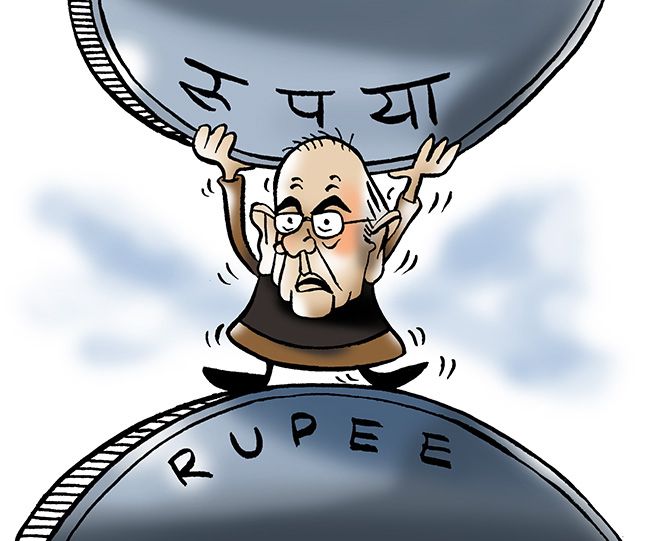Fiscal deficit in first half of FY19 has already reached 95.3 per cent of full-year budget estimates.
Illustration: Uttam Ghosh/Rediff.com

Following decline in oil prices, the country's current account deficit (CAD) is expected to touch 2.6 per cent of GDP in the current fiscal against an earlier expectation of 2.8 per cent, a report said.
Fiscal deficit in first half of FY19 has already reached 95.3 per cent of full-year budget estimates (BE).
Total receipts for the six months period is Rs 7.09 lakh crore (39 per cent of BE) and the total expenditure is estimated at Rs 13.04 lakh crore (53.4 per cent of BE).
"The recent decline in oil prices might compress the CAD by around $5-6 billion from our estimates of $78 billion. This will imply CAD settling down at 2.6 per cent of GDP (previously 2.8 per cent of GDP)," according to a SBI Research report.
The report earlier stated that CAD may touch 2.8 per cent of GDP in the current financial year on surge in crude oil prices and moderate growth in exports.
The report noted that for the second year in succession, direct tax collections are likely to be higher than the budgeted targets by at least around Rs 20,000 crore.
"There will also be an additional Rs 14,000 crore surplus tax collections under customs duty," the report said.
In addition to this, the government is expected to add another Rs 20,000 crore to its kitty from evaded taxes, it said.
In terms of GST receipts and excise duty, the report said the picture is not rosy.
It said the Rs 20,000 crore collection under LTCG looks difficult to attain given the difficult market conditions.
"We expect a Rs 90,000 crore shortfall in indirect taxes. Additionally, the excise cut made by the government will also impact the excise duty earnings on income side by Rs 10,500 crore," it said.
On the subsidy front, the report said the first six months have seen the total spending reaching 71 per cent of the FY19 target.
The significant moderation in oil prices observed lately may give a succour and the additional subsidy burden might be now restricted to Rs 11,720 crore or even less, it added.
Looking on the expenditure side, it is observed that the government has front loaded its capex (54 per cent of BE during April-September 2018).
"This will possibly be reduced in the second half of FY19, and so, expenditure is the key to maintain fiscal prudence," the report said.
Government may cut its expenditure by at least Rs 70,000 crore to meet budgeted fiscal deficit of 3.3 per cent, it added.











 © 2025
© 2025